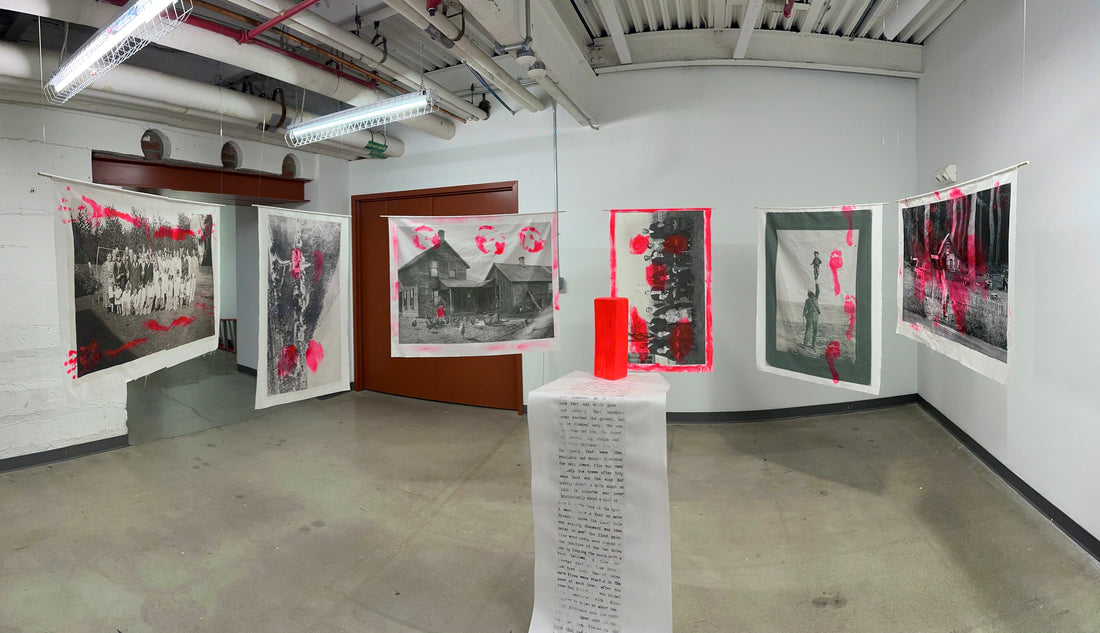Images: Cotton Fabric, Ink Jet, Acrylic Paint, Wooden Rod
Center objects: Split, Log, Acrylic Paint, Newsprint, Oil-Based Ink










Text:
The method used to clear coniferous forest-covered land near the end of the nineteenth century was unique and different from methods employed elsewhere to bring virginal land under cultivation. Tall trees, some with diameters up to six or more feet and which grew in such density that sunshine never reached the ground, had to be cleared away. The axe, the cross cut saw, the shovel, the peavey, log chains and a few other implements were all the tools that were then available and horses furnished the only power.
Fire was used to fell the trees after they were dead and the wood had partly dried. A hole about an inch in diameter was bored horizontally about a foot or more into the base of the tree. A second hole a foot or more directly above the first hole and angling downward was then bored to meet the first hole. Live wood coals were placed at the junction of the two holes, and by fanning the coals with a hand bellows, a fire was started that in time burned the tree down. Two or three such fires were started in the base of each tree. After the tree had fallen, it was burned into sections with fires started in holes at about ten foot intervals into the trunk similar to those made to burn the tree down. Pieces of the trunk that had not burned were dragged to the stump with horses and a log chain then set afire to burn the stump out and to burn large roots to below plow depth in the soil. Not many years later blasting powder was available to uproot steps and roots, but such new methods were not commonly used near the end of the nineteenth century. - Otto Elmer

